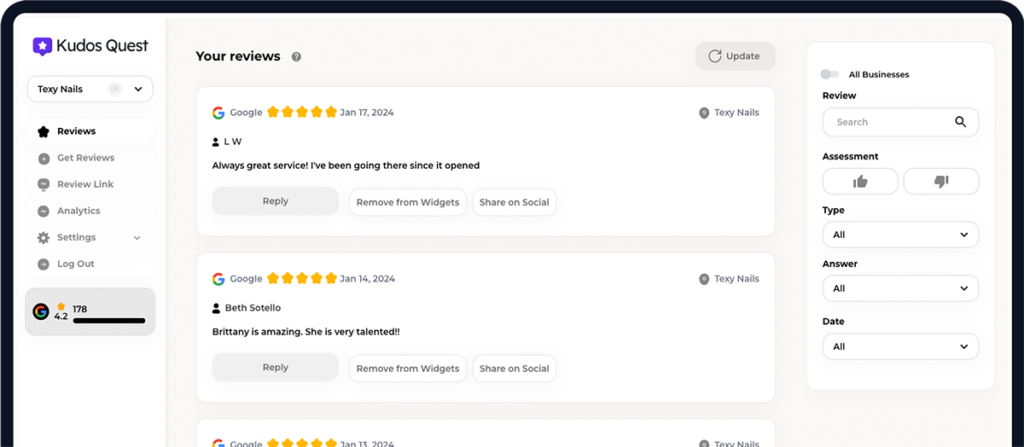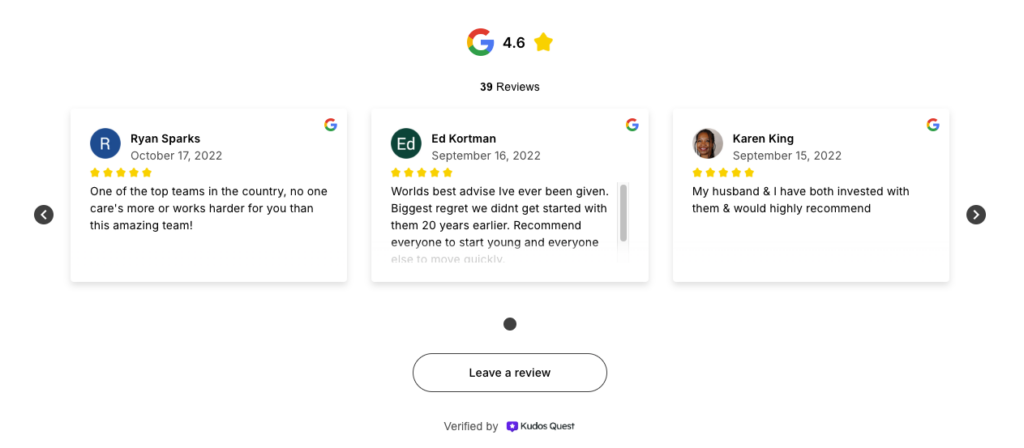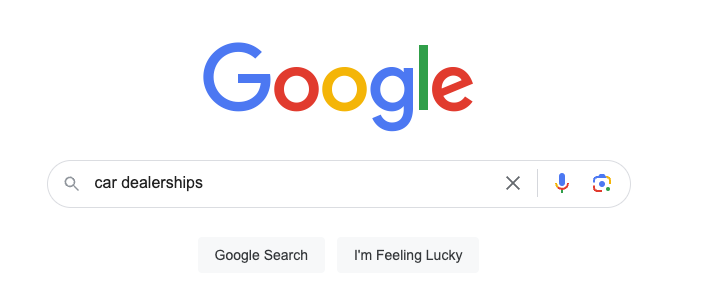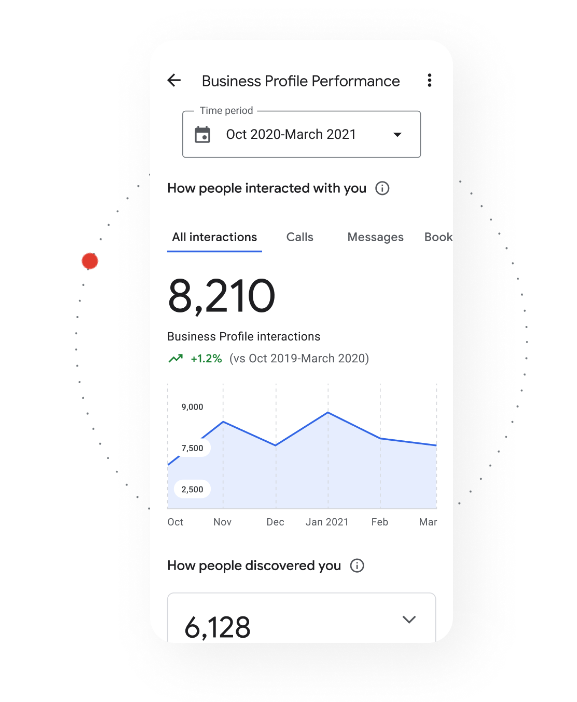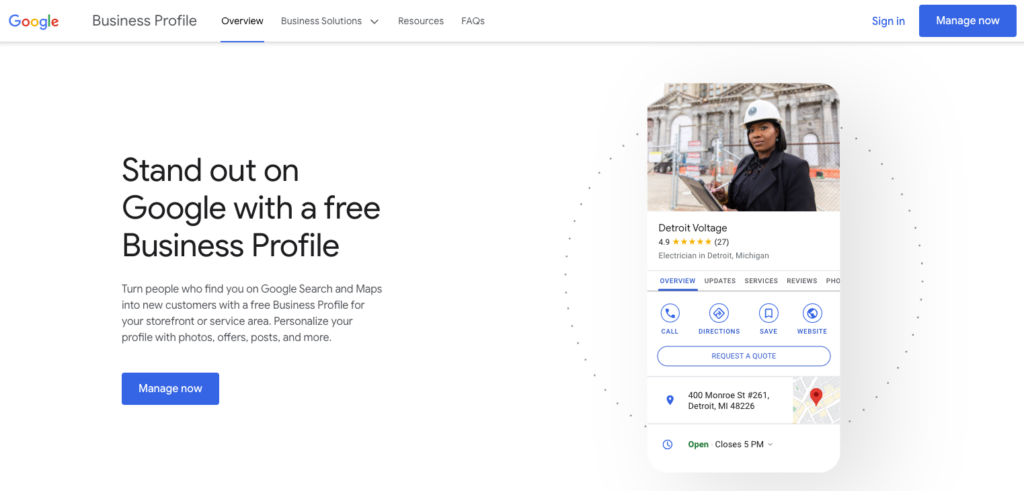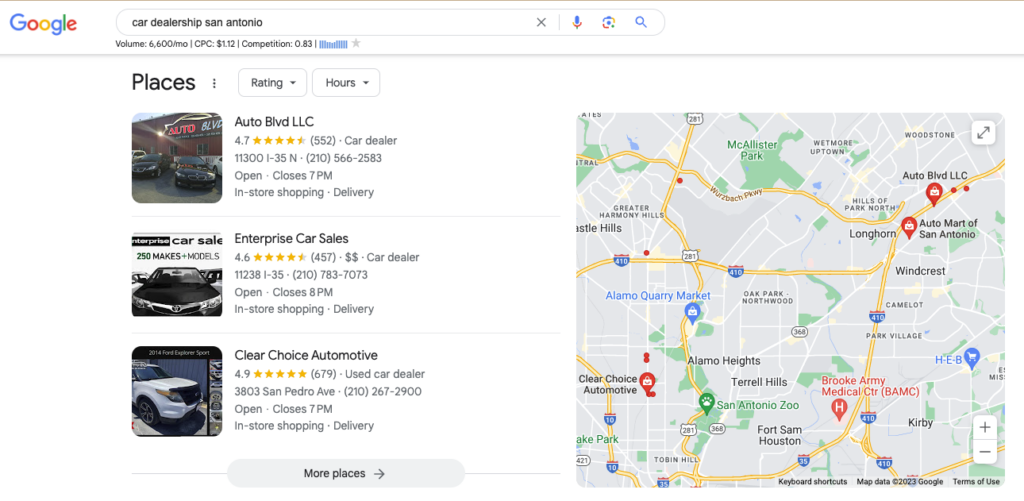Google Business Profile for Automotive Explained
Google Business Profile(GMB) is a free tool provided by Google that allows businesses to manage their online presence across the search engine and its growing portfolio of utilities. This includes the popular search engine and Google Maps. Automotive SEO, on the other hand, refers to the process of optimizing a car dealership’s or automotive business’s website to rank higher on search engine results pages (SERPs). This glossary article will delve into the intersection of these two concepts, providing a comprehensive understanding of how Google Business Profile can be leveraged for automotive SEO.
Understanding the intricacies of Google Business Profile and automotive SEO is crucial for any business in the automotive industry that wishes to increase its online visibility, drive more traffic to its website, and ultimately generate more leads and sales. This article will cover everything from the basics of Google Business Profiles and automotive SEO to advanced strategies and techniques for maximizing your online presence and search engine rankings.
Understanding Google Business Profile
Google Business Profile is a free tool that allows businesses to manage their online presence across Google’s services. This includes the Google search engine and Google Maps. By creating a Google Business Profile listing, businesses can provide potential customers with important information such as their address, phone number, business hours, and more. This information appears in the local search results, making it easier for potential customers to find and contact the business.
Google Business Profile also provides businesses with the opportunity to engage with customers by responding to reviews, posting updates, and answering questions. This engagement can help businesses build a positive online reputation and foster customer loyalty. Additionally, Google Business Profile offers insights into how customers find and interact with the business’s listing, which can be used to inform marketing strategies.
Setting Up Google Business Profile
Setting up a Google Business Profile listing is a straightforward process. First, businesses need to create a Google account or use an existing one. Then, they can go to the Google Business Profile website and follow the prompts to create a new listing. This involves entering the business’s name, address, phone number, website, and other relevant information.
Once the listing is created, businesses need to verify their listing. This is typically done by receiving a postcard from Google with a verification code. After the code is entered into the Google Business Profile dashboard, the listing is verified and will start appearing in the local search results. It’s important to keep the information on the listing up to date, as outdated or incorrect information can lead to customer confusion and missed opportunities.
Optimizing Google Business Profile for SEO
While simply having a Google Business Profile listing can help businesses increase their online visibility, optimizing the listing can further enhance its SEO benefits. This involves using relevant keywords in the business description, adding high-quality photos, and encouraging customers to leave reviews. Additionally, regularly updating the listing with new posts and information can signal to Google that the business is active and relevant, which can boost its ranking in the local search results.
Another important aspect of optimizing Google Business Profile for SEO is managing and responding to reviews. Positive reviews can improve a business’s online reputation and increase its appeal to potential customers. Meanwhile, responding to negative reviews in a professional and constructive manner can show that the business values customer feedback and is committed to resolving issues. This can also have a positive impact on the business’s search engine ranking, as Google considers review responses when determining local search rankings.
Understanding Automotive SEO
Automotive SEO refers to the process of optimizing a car dealership’s or automotive business’s website to rank higher on search engine results pages (SERPs). This involves using relevant keywords, creating high-quality content, and building a user-friendly website. The goal of automotive SEO is to increase the website’s visibility on search engines, attract more traffic, and ultimately generate more leads and sales.

One of the key aspects of automotive SEO is keyword research. This involves identifying the words and phrases that potential customers are using to search for vehicles or automotive services. These keywords should then be incorporated into the website’s content, meta tags, and URLs to help the website rank higher for those search terms. However, it’s important to use keywords naturally and avoid keyword stuffing, as this can lead to penalties from search engines.
On-Page and Off-Page SEO
Automotive SEO can be divided into two main categories: on-page SEO and off-page SEO. On-page SEO refers to the optimization of elements on the website itself, such as the content, meta tags, and website design. This involves using relevant keywords, creating high-quality and engaging content, and ensuring that the website is easy to navigate and loads quickly.
Off-page SEO, on the other hand, refers to the optimization of elements outside of the website that can impact its search engine ranking. This includes building high-quality backlinks, managing online reviews, and engaging in social media marketing. Both on-page and off-page SEO are crucial for achieving high search engine rankings and should be part of any automotive SEO strategy.
Local SEO for Automotive Businesses
Local SEO is particularly important for automotive businesses, as most customers are looking for dealerships or services in their local area. This involves optimizing the website and online presence to rank higher for local search terms. One of the key aspects of local SEO is creating and optimizing a Google Business Profile listing, as this can significantly increase a business’s visibility in the local search results.
Other important aspects of local SEO include managing online reviews, building local backlinks, and optimizing the website for local keywords. For example, instead of just targeting the keyword “used cars,” a dealership might target “used cars in [city name]” to attract local customers. Additionally, including the business’s address and phone number on the website can help search engines understand where the business is located and show it in the local search results.
Combining Google Business Profile and Automotive SEO
Combining Google Business Profile and automotive SEO can provide businesses with a powerful way to increase their online visibility and attract more customers. By creating and optimizing a Google Business Profile listing, businesses can appear in the local search results, making it easier for potential customers to find and contact them. Meanwhile, implementing automotive SEO strategies can help the business’s website rank higher for relevant search terms, driving more traffic to the website and generating more leads and sales.
One of the key ways to combine Google Business Profile and automotive SEO is through local SEO. This involves optimizing both the Google Business Profile listing and the website for local search terms. For example, a car dealership might use the keyword “used cars in [city name]” in both its Google Business Profile description and its website content. This can help the dealership rank higher in both the local and organic search results, attracting more local customers.
Review Management
Review management is another important aspect of combining Google Business Profile and automotive SEO. Positive reviews on a Google Business Profile listing can improve the business’s online reputation and increase its appeal to potential customers. Meanwhile, responding to negative reviews in a professional and constructive manner can show that the business values customer feedback and is committed to resolving issues. This can also have a positive impact on the business’s search engine ranking, as Google considers review responses when determining local search rankings.
Review management also plays a role in automotive SEO. Online reviews can appear in the organic search results, influencing potential customers’ perceptions of the business. Additionally, search engines consider online reviews when determining search engine rankings, so managing and responding to reviews can help improve a business’s SEO.
Content Creation
Content creation is a key component of both Google Business Profile and automotive SEO. On the Google Business Profile side, businesses can post updates, events, and offers to engage with customers and keep them informed. These posts can include relevant keywords to help the listing rank higher in the local search results.
On the automotive SEO side, creating high-quality and engaging content can help the website rank higher in the organic search results. This content should be relevant to the target audience and include the keywords that potential customers are using to search for vehicles or automotive services. Additionally, the content should be regularly updated to keep it fresh and relevant, as search engines favor websites with fresh and updated content.
Advanced Strategies for Google Business Profile and Automotive SEO
While the basics of Google Business Profile and automotive SEO can provide a solid foundation for increasing a business’s online visibility, there are also advanced strategies that can further enhance its search engine rankings. These include using schema markup, building high-quality backlinks, and leveraging social media.

Schema markup is a type of microdata that can be added to a website to help search engines understand the content. This can help the website rank higher for relevant search terms. For automotive businesses, schema markup can be used to provide search engines with detailed information about vehicles, such as the make, model, year, and price.
Backlink Building
Backlink building is another advanced strategy for improving a business’s search engine ranking. Backlinks are links from other websites to your own, and they are considered by search engines as a vote of confidence in your content. The more high-quality backlinks a website has, the higher it can rank in the search engine results.
There are many strategies for building backlinks, such as guest blogging, creating shareable content, and participating in relevant online communities. However, it’s important to focus on building high-quality backlinks from reputable websites, as low-quality or spammy backlinks can lead to penalties from search engines.
Social Media Integration
Social media integration is another advanced strategy for improving a business’s online visibility. This involves linking the business’s social media profiles to its Google Business Profile listing and website, and using social media to promote the business and engage with customers. Social media can also be used to drive traffic to the website, which can improve its search engine ranking.
Additionally, social media can be used to collect and respond to reviews, which can improve the business’s online reputation and SEO. By integrating social media into their Google Business Profile and automotive SEO strategies, businesses can reach a larger audience and create a more cohesive online presence.
Conclusion
Google Business Profile and automotive SEO are powerful tools for any business in the automotive industry that wants to increase its online visibility and attract more customers. By understanding and implementing the strategies discussed in this article, businesses can improve their search engine rankings, drive more traffic to their website, and ultimately generate more leads and sales.

While the basics of Google Business Profile and automotive SEO can provide a solid foundation, businesses should also consider implementing advanced strategies such as schema markup, backlink building, and social media integration. These strategies can further enhance a business’s online presence and search engine rankings, providing a competitive edge in the increasingly digital automotive industry.



